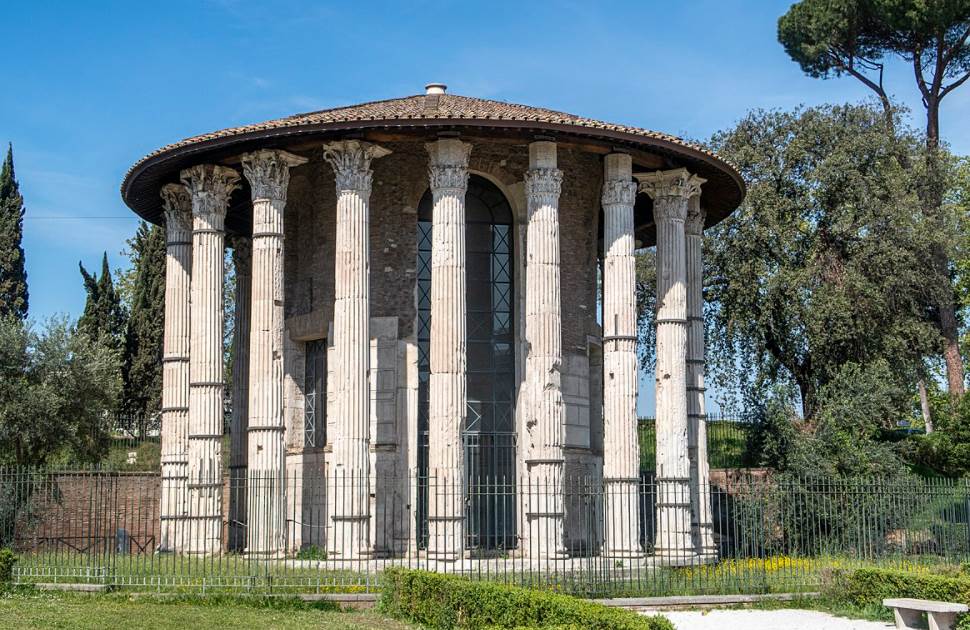The Romans left behind numerous ancient monuments that are a testimony to the advanced level of engineering skills they possessed.
They constructed huge stadiums, massive amphitheaters, and vast bathhouses that were supplied by aqueducts. All of these served as ancient entertainment complexes.
Although very few Roman temples remain intact today, some of them give us a glimpse of the monumental structures they constructed as well.
In this article, you’ll discover some of the most famous Roman temples, several of which were constructed about 2 millennia ago.
1. Pantheon – Rome
The Roman Pantheon is without a doubt the most famous of all Roman temples. The original version of which the portico still stands was constructed during the reign of the first Roman Emperor Augustus.
It was built by the architect of Augustus, a man named Marcus Agrippa. Although it was reconstructed during the reign of Hadrian, his initials still decorate the portico of the temple.
The building in Rome was transformed into a Roman Catholic church in the early 7th century which partially explains why it’s still in relatively good condition today.
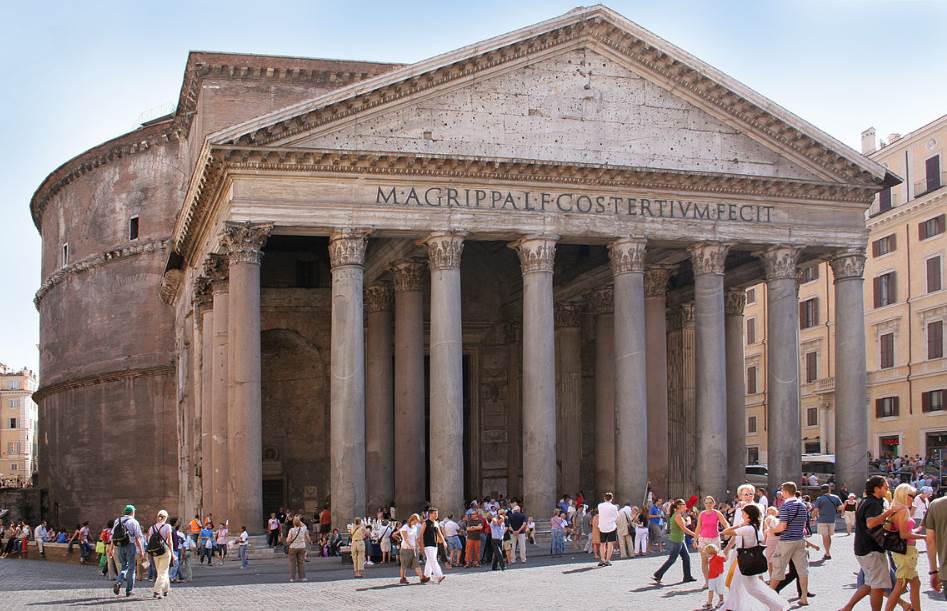
2. Temple of Portunus – Rome
The Temple of Portunus is a much smaller, yet equally well-preserved temple in Rome. It’s unclear when it was constructed because several Roman temples stood in this area before.
The structure was originally known as the “Temple of Fortuna Virilis.” It was probably rededicated later on to Portunus, the Roman god of keys, doors, and livestock.
The Forum Boarium was located here in ancient times. It’s situated just near the Tiber River and this place once served as the cattle market of Rome.
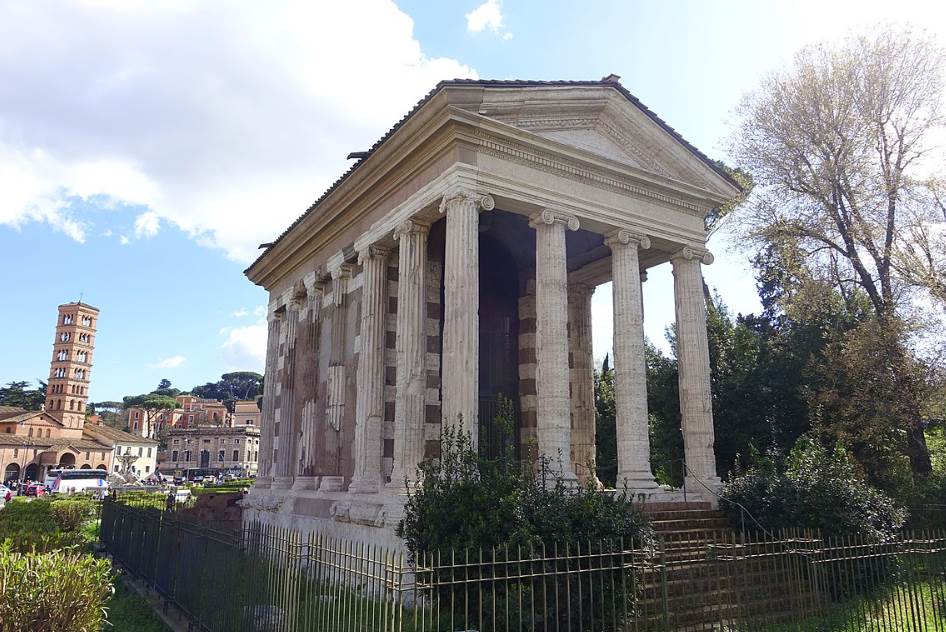
3. Maison Carrée – Nîmes
The Maison Carrée or “Square House” is a magnificent temple located in the southern French city of Nîmes. It’s one of the best-preserved Roman temples outside of Rome.
It’s another temple that was constructed during the reign of Augustus. It’s also possible that it was rededicated during his reign to Gaius Caesar and Lucius Caesar, both grandsons of the emperor who died young.
The amazing design of the temple served as the inspiration for La Madeleine, a marvelous church in Paris that is pretty much the large-scale version of this temple.
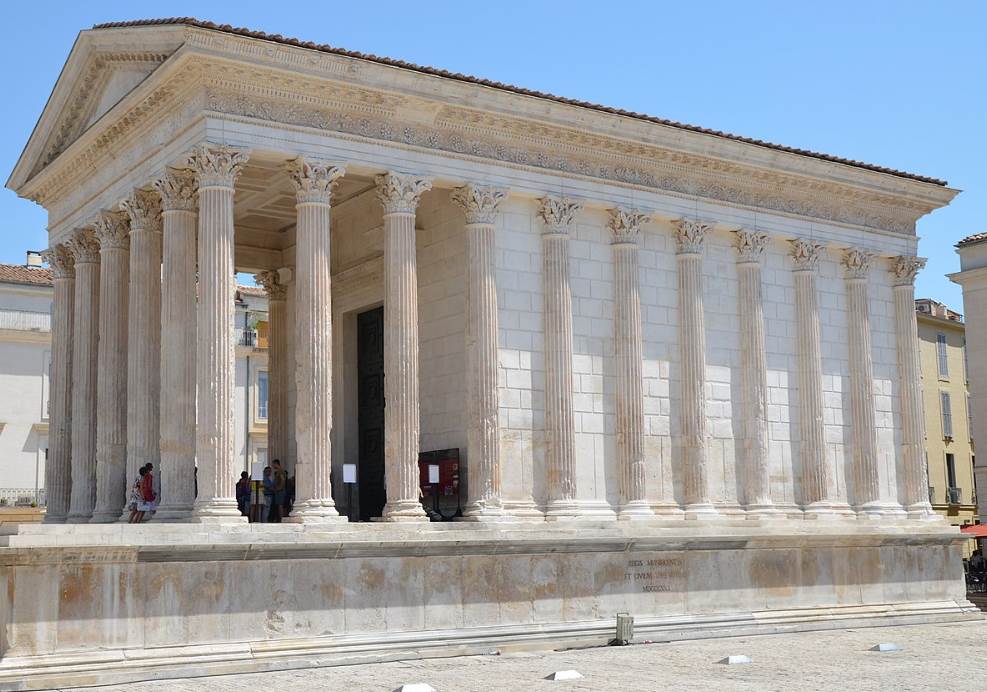
4. Temple of Bacchus – Baalbek
The Temple of Bacchus is a monumental ancient temple and the centerpiece of the archaeological complex of Baalbek, a city in Lebanon.
It’s unclear when exactly the temple was constructed, but some historians believe it was commissioned by Roman Emperor Antoninus Pius who reigned in the 2nd century.
The temple reaches a height of 31 meters (102 feet) and has dimensions of 66 by 35 meters (217 by 115 feet), an enormous structure indeed.
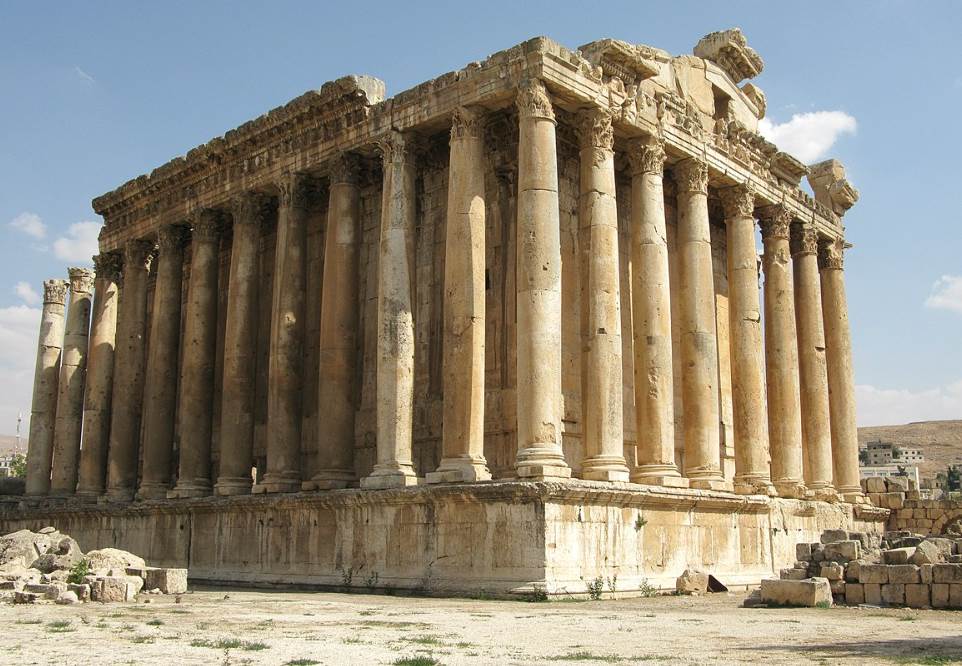
5. Temple of Augustus and Livia – Vienne
As the name of the Temple of Augustus and Livia, it was constructed in honor of Roman Emperor Augustus and his wife Livia. This means that it dates back to the first century A.D.
It’s located in the French city of Vienna which is situated just south of Lyon. This is in the French department of Isère in the Rhônes-Alpes region of France.
It’s one of the many temples that features a portico and Corinthian columns on 3 sides. There are no columns at the back wall which means that the structure is partially enclosed.

6. Temple of Augustus – Pula
The Temple of Augustus was constructed for the same purpose as the other temples dedicated to the first Roman Emperor and is located in the Croatian city of Pula.
Yes, this is also the location where you can find the magnificent Pula Arena, one of the best-preserved Roman amphitheaters. This is in the utmost northwestern part of the country.
Although it’s a free-standing temple today, it was adjoined by 2 other temples in ancient times. Today, it’s adjoined by the Pula Communal Palace which houses the offices of the local government.
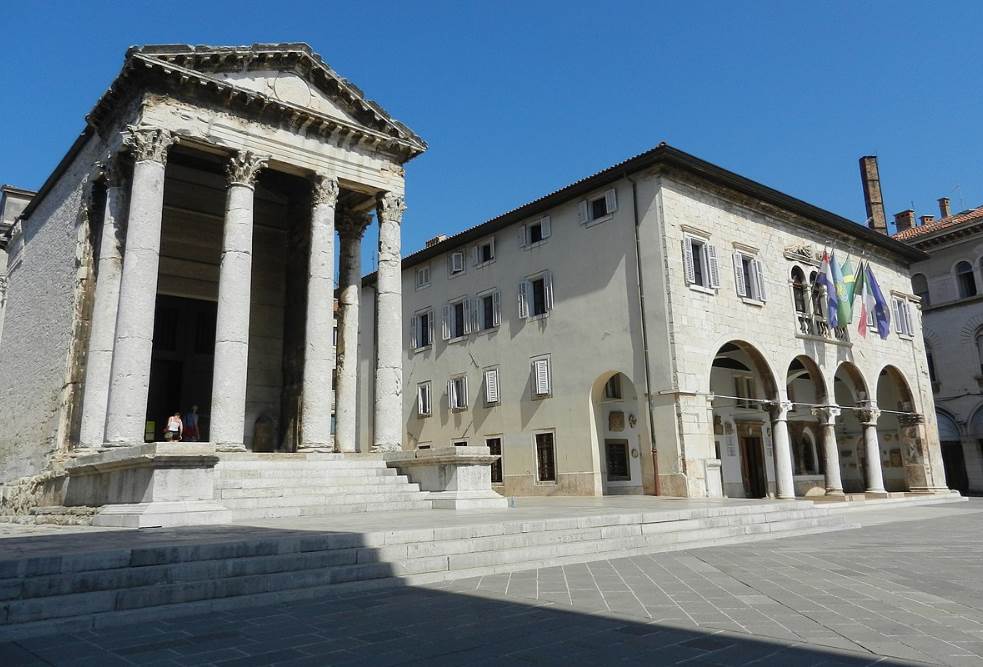
7. Temple of Minerva – Assisi
The Temple of Minerva is the most fashioning structure in the town of Assisi. This ton is located in the Province of Perugia in the Umbria region of Italy.
The temple was completely repurposed in the early 16th century and has housed a church known as “Santa Maria Sopra Minerva” ever since. It was partially transformed into a Baroque building in the 17th century.
It’s named after the Roman Goddess Minerva because of a statue of her that was found here. This probably wasn’t the case in ancient times as it’s fairly certain the temple was dedicated to Hercules back then.

8. Temples of Sufetula – Sbeitla
The 3 temples of Sufetula are some of the most fascinating structures of the archaeological site of Sbeitla in the north-central part of Tunesia, northern Africa.
The 3 remarkable temples line the ancient Roman Forum of Sufetula which is one of the best-preserved of its kind.
The site was completely excavated between 1906 and 1921 and this uncovered a wealth of ancient structures, including a triumphal arch, a nothing complex, and an ancient theater.
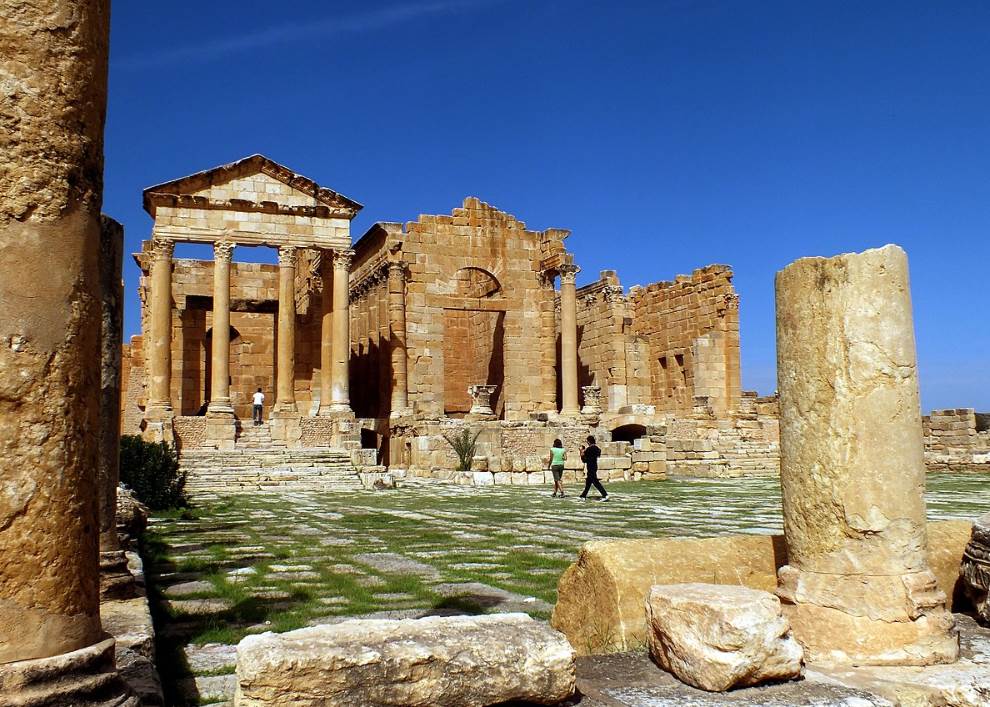
9. Temple of Diana – Mérida
The Temple of Diana is one of the most fascinating landmarks in the Spanish city of Mérida. This city is located just north of Seville in the southwestern part of the country.
It was one of the main structures in the ancient city of “Emerita Augusta” which was founded in 25 B.C. by the first Roman emperor Augustus himself.
The city grew into the regional capital which means that theaters, forums, arenas, and several temples were constructed here. Many of these are in pretty good shape which makes Mérida the most fascinating city in Spain to admire ancient monuments.
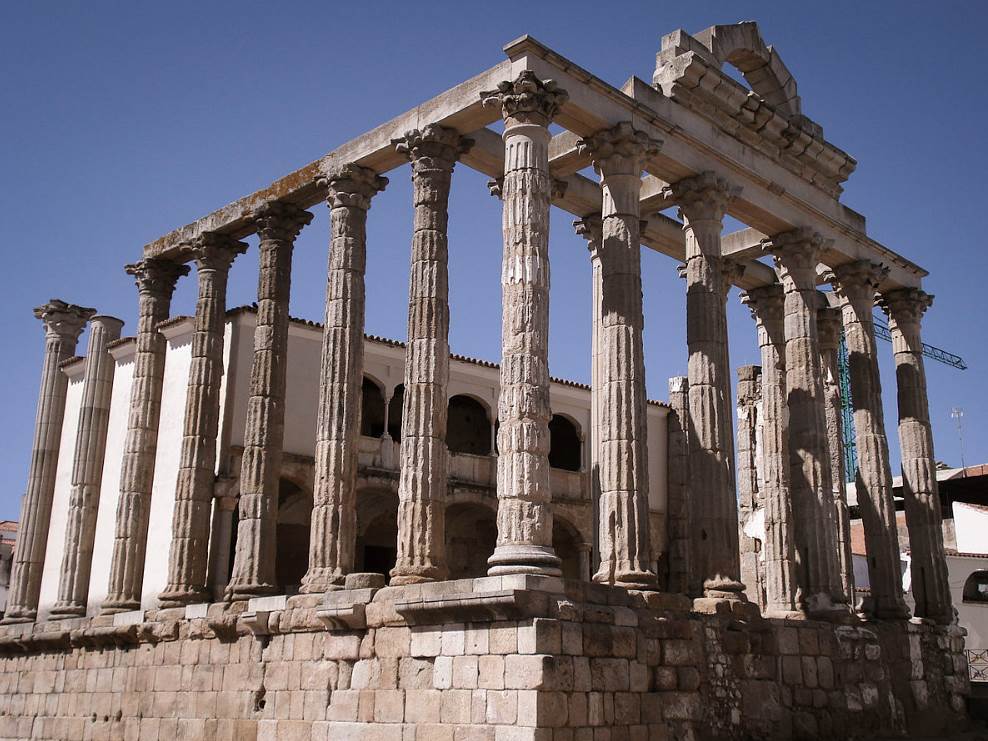
10. Temple of Hercules Victor – Rome
The Temple of Hercules Victor “or Hercules Winner” is a circular temple located near the Temple of Portunus, right across from the ancient Forum Boarium.
It’s surrounded by columns which means that it’s a so-called “Tholosa Temple.” This design was influenced by ancient Greek temples.
The temple was constructed using Greek marble and is the oldest of its kind that has survived in Rome today. It remains unknown who it was dedicated to and for what purpose it was constructed in this location.
